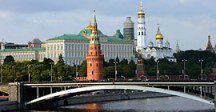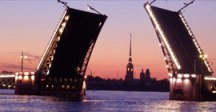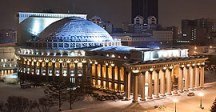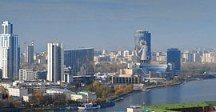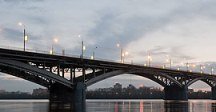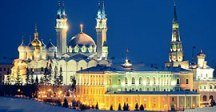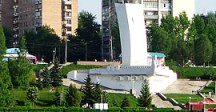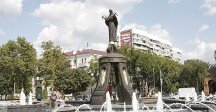Map of Belgorod
Detailed interactive map of Belgorod. Map of Belgorod with streets and numbers of houses. Satellite map of Belgorod with sights of the city.
The change between the satellite map of Belgorod and the schematic one is made in the lower left corner of the interactive map.
Belgorod
The population of the city Belgorod: 391,702 people (2021)
Date of foundation of Belgorod: 1596.
Belgorod city phone code: +7 4722
Belgorod automobile area code: 31
Postal code of the city Belgorod: 308000-309000
Belgorod is a city with a population of 400,000 in the south of Russia. Belgorod has the title of the city of military glory. It is divided into two districts – western and eastern. The spiritual life of the city is especially intense here, which is given special attention.
This is confirmed by 17 temples and cathedrals, some of which date back to the 17th century. Places of pilgrimage are the symbolic cathedrals of the Transfiguration and Smolensky.
What to see in Belgorod
The main attractions of Belgorod are located around its main square - Cathedral Square, located between Holy Trinity Boulevard and Grazhdansky Prospekt, which leads to the railway station. To the north of the Cathedral Square runs Narodny Boulevard, most of which is a pedestrian street.
The square at the beginning of Popov Street, next to the Veselka River and Victory Park, is known as Museum Square, because the most famous museums of Belgorod are located here. There are fewer attractions south of the Veselka River, the main attraction here is the monument to St. Vladimir on the Kharkov hill.
Universitetskaya Embankment - a small church of the Archangel Gabriel is located on the territory of Belgorod State University (BelSU). Its most interesting architectural feature is the entrance, which creates the feeling that a person enters the church through the pages of an open Bible.
Monument to Army General Apanasenko - on the square in front of the railway station there is a statue of Joseph Apanasenko, who held the rank of army general during World War II. In the early years of the war, Apanasenko commanded the army on the Far Eastern Front, but was transferred at his request to the post of deputy commander on the Voronezh Front.
Marfo-Mariinsky Convent on Pushkin Street. Although the Marfo-Mariinsky Convent itself was founded very recently, in 1992, it was founded around two pre-existing buildings that date back to the 18th century.
Monument to Mikhail Shchepkin - next to the Mikhail Shchepkin State Academic Drama Theater, at the opposite end of the square from the administrative building, there is a statue of Mikhail Shchepkin, who was one of the most famous actors in Russia in the 19th century.
Shchepkin even founded his own acting style, which later influenced Konstantin Stanislavsky, who is known to have been a pioneer of acting. He was born in 1788 in the Belgorod region, then part of the Kursk province.
Narodny Boulevard is the main pedestrian street of Belgorod and one of the most beautiful. At its beginning there is a memorial stone with an engraving dedicated to the Belgorod regiment that participated in the Battle of Poltava in 1709. The monument "My first Teacher" pays tribute to beloved teachers.
Smolensk Cathedral of the Blessed Virgin Mary on Grazhdansky Prospekt. The Cathedral of Our Lady of Smolensk was built between 1727 and 1762 in memory of a wonderful event when, according to legend, at the place where the cathedral now stands a copy of the Smolensk Icon of the Mother of God, which began to emit a ray of light capable even of lighting a candle.
The State Literary Museum on Preobrazhenskaya Street. The Belgorod State Literary Museum is located in a building known as the Selivanov House, which dates back to the 18th century and is one of the oldest buildings in the city.
The museum has four halls and exhibitions dedicated to folk culture, journalism, classical and modern literature. It includes manuscripts by famous authors, including Pushkin, and samples of ancient books.
Monument to Stepan Degtyarev on Grazhdansky Prospekt. A few meters from the Cathedral of Our Lady of Smolensk, opposite the Stepan Degtyarev Music School, there is a statue of Stepan Degtyarev. Degtyarev was a famous composer who was born in 1766 in the Belgorod region, which was then part of the Kursk province. His most famous work is the oratorio "Minin and Pozharsky, or the Liberation of Moscow", which he composed in 1811.
Preobrazhensky Diocesan Cathedral on Preobrazhenskaya Street. The Transfiguration Cathedral was built in 1813 to commemorate Russia's victory over Napoleon. It is built in the Russian classical style and has a turquoise color with five golden domes and an attached bell tower.
Monument to Vladimir Lenin on Cathedral Square. The monument to Vladimir Lenin in Belgorod stands on the north side of the main square of the city - Cathedral Square, which was previously known as Revolution Square.
The War Memorial and the Eternal Flame on Holy Trinity Boulevard. The Belgorod War Memorial and the Eternal Flame are located near the Cathedral Square at the beginning of the boulevard. The names of 167 soldiers who fell defending Belgorod are engraved on the memorial plates.
The church complex on the Kharkov mountain on Shchors Street. A new church complex consisting of two churches and two small chapels was built in the park at the corner of Shchors and Korolev Streets. The complex has 17 golden domes and a separate bell tower. The smaller of the two churches, the wooden Church of St. George, was built between 1997 and 2001 in the Old Russian style.
Monument to an Incorruptible traffic policeman at the intersection of Gubkin and Vatutin streets. In 2004, a monument to Pavel Grechikhin, who was a local traffic police officer known for never taking bribes, was unveiled at the roundabout at the intersection of Gubkin and Vatutin streets. Grechikhin did not make exceptions because of rank or rank and was not afraid to fine the most important citizens of the city for violating traffic rules. Legend has it that he even fined his own wife once!
Monument to St. Vladimir the Great in front of house 4 on Vatutin Avenue. Saint Vladimir the Great was the great Kievan prince of the 10th century, under whom Kievan Rus converted to Christianity in 988. The Belgorod monument by sculptor Vyacheslav Klykov stands on the Kharkov hill overlooking the city. In total, the monument has a height of 22 meters, with the figure of St. Vladimir on a pedestal with two sections.
The Fire Ledge diorama Museum on Popov Street. The Belgorod Museum-diorama is dedicated to the Belgorod offensive in the Battle of the Kursk Bulge. Inside the white arch-shaped building there is both a museum and a diorama, which were opened in 1987. The main attraction is a 67-meter diorama, which depicts the events of a tank battle that took place on the nearby Prokhorovsky field on July 12, 1943.
The sights of Belgorod also include museums. For example, the literary museum, which is interesting not only for its collection with the rarest printed publications, but also for the architecture of the building – the most beautiful structure of the 17th century in the city. The design of the Fiery Arc museum building, which has a curved appearance, is also unusual. Near the museum there are viewing platforms with expositions of military equipment of the wartime.
Transport in Belgorod
Belgorod Railway Station is located near the city center at the beginning of Civil Street, which leads to Cathedral Square. You can get to the center from the train station on foot, passing several attractions along the way. The station is located at 1 Vokzalnaya Street.
Popular destinations: Moscow, Voronezh, Perm, Arkhangelsk, Vorkuta, St. Petersburg, Smolensk, Murmansk, Cherepovets, Kirov, Kazan, Labytnangi and Nizhny Tagil. Trains run to Crimea (Sevastopol, Yevpatoria, Feodosia, Simferopol), to the Caucasus (Adler, Yeysk, Kislovodsk, Mineralnye Vody, Novorossiysk) and to some cities of Ukraine (Donetsk, Kharkov, Berdyansk, Dnepropetrovsk, Mariupol, Krivoy Rog).
However, some of these trains are seasonal and run only during the summer months. Commuter trains run in the direction of Kursk, Kharkov, Nezhegol/Volchansk and Gotni.
Belgorod Bus station is located quite far from the city center, on Bogdan Khmelnitsky Avenue. Address of the Belgorod bus station: ave. Bogdan Khmelnitsky, 160.
Popular destinations in Russia: Moscow, Kursk, Lipetsk, Orel, Prokhorovka, Saratov, Stary Oskol, Volgograd and Voronezh. International destinations: Chisinau, Dnepropetrovsk, Donetsk, Kharkiv and Kiev.
Belgorod International Airport is located near the Belgorod bus station. You can get to the airport from the railway station by trolleybus No. 1 or No. 4 or bus No. 1, No. 4 or No. 25. Airport address: 166 Bogdan Khmelnitsky Street.
Popular destinations in Russia: Moscow, Anapa, Mineralnye Vody, Nizhny Novgorod, Norilsk, Rostov-on-Don, St. Petersburg, Sochi, Surgut, Tyumen. International destinations: Antalya, Barcelona and Heraklion.
Being located between Moscow and Ukraine, Belgorod has good transport links with the capital. There are also flights to Belgorod from Moscow and St. Petersburg. Good communication between Belgorod and Kursk.
Several airlines (Polet, Pobeda and UTair) operate flights between Belgorod International Airport and Moscow Domodedovo or Vnukovo airports. There are usually 4 flights per day in both directions.
The sights of Belgorod
Belgorod Fortress, Two monkeys, Diorama Museum "Battle of Kursk. Belgorod direction", Belgorod State Art Museum, Belgorod Zoo, Stele "City of Military Glory", Church of the Blessed Matron of Moscow, Monument to Vladimir the Great.
The largest cities in Russia:
2024 © Russia-Karta.ru
